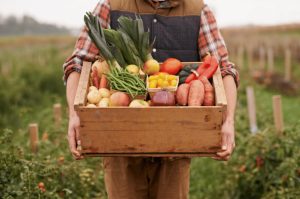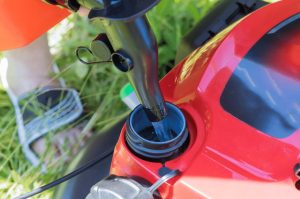There is a popular trend among backyard gardeners: container and small-space gardening. While traditional farms and vegetable garden patches still exist, with less land and more city, space for traditional gardens is hard to come by. This is particularly true in areas such as Melbourne.
But it is possible to still have a successful garden in small urban spaces, and tomatoes are a wonderfully easy plant to try out for a first crop. Knowing what to plant and when in Melbourne is the best way to get a harvest you can be proud of!
Our plant and garden experts focused on container gardens for urban city life and have created this guide to help you grow your first, of hopefully many, tomato crops!
- Before we dive in: If you’re not from Melbourne, check out our city-specific tomato growing guides for Adelaide, Perth or Sydney!
Best tomato varieties for small spaces
There are many varieties to choose from when planting tomatoes in Melbourne. Home gardens often feature delightful varieties such as Gross Lisse, Sweet Cherry Gold, Tommy Toe, Black Russian, Beefsteak, and others. But for the smaller space in the middle of the city, these are the tomato types our experts recommend you start off with:
Cherry tomatoes
Cherry tomatoes have many flavours and varieties that have stood the test of time. Some are sweeter, and others are rich and savoury. But they are all relatively compact compared to regular tomato bushes. They are perfect for container gardens and can work well in an urban setting due to their size and prolific production.
Beefsteak tomatoes
Rather than the obvious association with steak burgers, these tomatoes got their name due to their hearty size and texture. They are perfect for slicing and hold up well with thicker skin and dense flesh that is juicy and delicious. These tomatoes are perfect for small garden spaces, as a single plant can yield many large tomatoes.
Salad tomatoes
Named for their popularity in salads, these bite-sized tomatoes are popular in Australian gardens. They come in various colours and are a sweet and juicy addition to salads and other side dishes. Some specialty varieties even have a little zing, making them a great, easy-to-grow addition to your urban garden.
Saucing tomatoes
These varieties are known for their bold flavours and ability to pair amazingly with other spices and flavours. They are great in containers, and the ratio of plants to tomatoes is ideal for small spaces. Popular in sauces, stews, and salsa, these tomatoes are a must-have for home gardeners looking to give tomatoes a try.

When to plant in Melbourne
A popular Australian tradition among gardeners is planting tomatoes around Melbourne Cup Day. However, this is not as solid advice as once thought. In fact, you could be cutting your home garden time by a month or more this way.
The truth is that the ideal time to get your tomatoes planted is around late September or early October. Doing this gives them the longest possible time to grow and produce as much as possible.
Melbourne Cup Day likely gained such popularity for the fact that it was easy to remember. It was a major holiday marker that let home gardeners know they needed to start on their tomato planting plans. Maximising your growing time is critical for larger tomatoes, such as beefsteak, as they only produce one round of fruit in a season.
Smaller varieties like cherry and salad tomatoes can produce more fruit for longer due to their smaller size. So, when it comes to planting your tomatoes in Melbourne, sooner is better!
How to grow tomatoes from seed in Melbourne
You can plant tomato seeds indoors and start your home garden a little ahead of time. When your seedlings are a few inches tall, you can start planning to move them into your outdoor contains. It is important to note that the soil temperature must remain above 15°C (ideally 20°C+).
Seeds can be started in a tray or smaller pots for easy transplanting when large enough. Simply make a shallow hole in the soil, then sprinkle in 3-4 seeds. Then, cover with a thin layer of soil. Be careful not to bury them too deep, or they won’t be able to sprout.
Place the seedlings in a sunny area, such as a window, and water regularly. Seeds should begin to sprout in 1-2 weeks, and after 3 weeks, you can transplant them to your container garden.
Tips to Take Advantage of the Microclimates of a Balcony or Rooftop
One of the interesting yet complicated aspects of container gardening in the city is the unique microclimates that exist. Urban gardening families usually do not have to worry about massive storms and droughts. Their climate concerns are more in line with how hot the balcony or rooftop gets at noon and how they will get water to their plants when needed. Temperature fluctuations can be much faster in a smaller area like this. Changes in wind, sunlight, and rainfall can also vary.
To make managing these microclimates easier and to help you get the most out of your crop, our garden experts put together the following tips for growing tomatoes in an urban setting:
- Choose varieties that are heat-tolerant and compact in size to fit your limited space.
- Don’t prune too much, as the leafy foliage helps shade and protect the rest of the plant.
- Find the right trellis support setup and test some to see what works for each plant type.
- Keep plants healthy and deal with any issues you see immediately.
- Inspect your crops regularly for signs of insects and diseases on the leaves and fruit.
- Utilise a lightweight shade cloth to keep the sun from burning leaves and fruit.
- Experiment with containers to see what works best for your space and setup.
- Remember, city wildlife will still happily chomp on tomato plants, so watch for the nibblers.
Watering and fertilising: City-friendly techniques
Fertilisers typically are not needed for tomatoes in a normal garden setting because the soil has all the nutrients required. However, in the limited space and soil of containers, fertilisers can be a good option. If you decide to fertilise, stick to those with low nitrogen and high potassium levels. This ensures the plant doesn’t produce green foliage without producing a healthy crop when you are ready to grow your own tomatoes.
Some Australian home gardeners have developed convenient self-watering systems. In contrast, others use sprinklers or drip irrigation hoses to water their tomato plants. If you choose to do the watering by hand, consider how you will transport the water to your containers. Lugging buckets can be a chore, and if you water by hand, you need to be mindful of how fast the containers dry out between waterings.
Wind is another factor to consider with urban tomato crops that affect watering and fertilising. Exposure to strong winds is another consideration to keep in mind. High winds and dry-out plants more quickly require more frequent watering. It can also affect fertiliser if you use a dry fertiliser, as high winds can sometimes blow it out of the containers.
Pest management
Fruit flies, whiteflies, ants, aphids, thrips, and caterpillars commonly attack tomato plants, even in urban settings. The key to keeping crops healthy is to avoid an infestation. Careful and routine inspection of your plants will make it easier to find problems while they are small and easy to deal with. When pests are found, you must deal with them quickly, as it can only take days for your crop to be totally overrun and destroyed.
When fighting pests on your tomato plants, you need to know what you are dealing with to find the best treatment options. If you don’t want to use general insecticides and chemicals, you also have natural options to consider.
Organic soaps, oils, and mixes use natural ingredients that target and kill pests while being safe for pets, people, and wildlife. These are a great option for tomatoes as they are safe to use on the fruit without the risk of contaminating the fruit with harmful chemicals.
When to harvest tomatoes in Melbourne
The best way to ripen tomatoes is on the vine. With this method, they are best picked with a bright red colour and are soft to the touch. At this stage, the tomatoes will be best consumed within a day or two of being picked.
The ripening time will depend on when they were planted and how fast they have grown on your balcony, roof, or other space. The seed packet or plant tag should usually offer tips and points for determining the right time to harvest your tomato crop. When you go to harvest, the fruit should pull off the stem easily with minimal effort and without needing to twist or break the stem.
Tomatoes planted in Spring generally produce fruit from late December to February, depending on the variety. To have tomatoes through until May, plant another crop in late December.
Storage tips for your harvest
It is best to use your tomatoes shortly after harvesting them for maximum freshness. If you need to hold onto them for a few days, that is not a problem. Simply, store in a cool, dry place away from sunlight until you need them. Longer holding time means you need to harvest before they are fully ripened to give you a few more days of holding time.
Final Thoughts
While traditional farms and gardens are far from extinct, urban gardening is becoming more popular than ever. This is particularly true in areas such as Melbourne. But even in urban settings with limited space, you can grow stunning tomato crops and enjoy the fresh food you grow yourself.
Choices such as the type of tomato you grow, the container you use and your watering and fertilising routine all contribute to a successful crop and harvest. Proper planning will make all the difference whether you are growing potatoes, tomatoes, or some other crop! The tips presented here by our Australian urban gardening experts will help you find success with your balcony, rooftop, or patio garden efforts.
We hope this guide will assist you on your journey of discovery as you see what urban gardening in Australia has to offer and how you can enjoy the fresh tomatoes you grow in Melbourne.
Useful resources for city gardeners in Melbourne
http://www.gardeners-melbourne.com.au/?utm_source=GMB&utm_medium=Places&utm_campaign=Website
https://greenthoughtsgardening.com.au/
https://www.wearemelbourneindoorplants.com.au/
FAQs
Can I grow tomatoes in winter in Melbourne?
Tomatoes are not cold- hardy plants and will not survive winter months in Melbourne. They need warmer temperatures with decent sun exposure.
Can I grow tomatoes indoors in Melbourne?
If you have the space and setup to make it work, you can grow them indoors with the right soil and enough exposure to sunlight. It is a very labour-intensive process and is generally not recommended as the results are not worth the work. But if you can invest the time needed, you could extend your growing season by a few months with indoor growing part of the time.
Can I save and use seeds from the tomatoes I grow?
Whether or not you can save seeds and grow new plants the following season will depend on the plants you are growing. Heirloom plants generally produce viable plants that produce fruit when grown from seed. Many modern varieties are hybrids and are sterile, meaning the seeds will grow foliage but no viable fruit.







